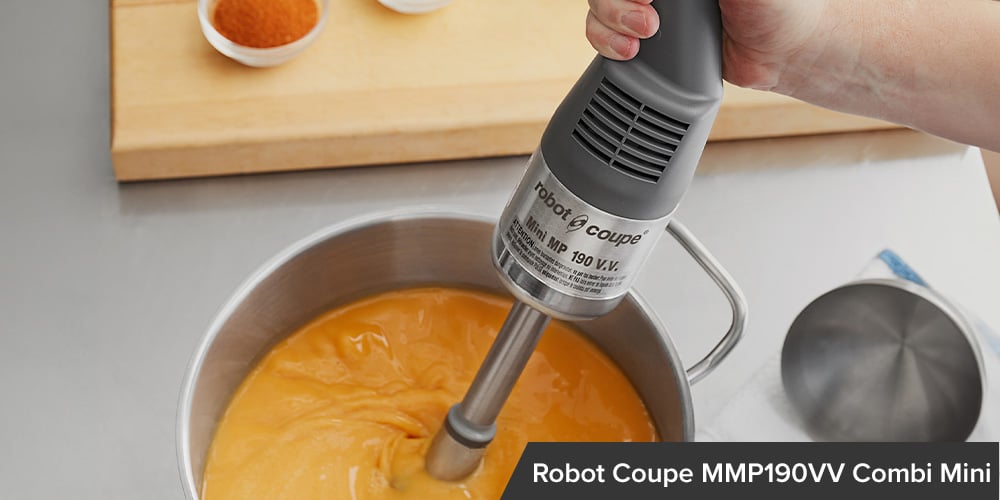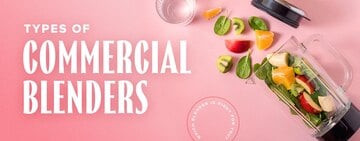The best immersion blenders strike a balance between power, safety, and versatility. Keep the factors listed below in mind as you shop to make the right purchase for your culinary needs.
1. Usage
Immersion blenders are categorized into three main types based on their power and durability: light-duty, standard-duty, and heavy-duty. Consider the frequency and intensity of use when choosing between blenders to maximize performance and longevity.
- Light-duty: Light-duty immersion blenders are best suited for settings where they will be used sparingly or only to blend light ingredients. These blenders are ideal for settings such as bakeries, where you expect to mix batters or create creamy fillings.
- Standard-duty: The power and durability of standard-duty immersion blenders make them a reliable choice for everyday use. They are well-suited for blending soups, preparing sauces, or mixing batter for baked goods.
- Heavy-duty: For tough jobs and extended use, heavy-duty immersion blenders are the best option. These powerful blenders can handle high-intensity tasks, including blending, chopping, crushing, and pureeing ingredients.
2. Features and Attachments
Most immersion blenders are compatible with various attachments to accommodate different tasks. By choosing an immersion blender with the right features for your commercial kitchen, you can streamline your blending processes and achieve consistent results.
- Standard blending arms: Blending arms are the traditional attachment on most immersion blenders. They are ideal for standard blending and come in different lengths to provide versatility in mixing.
- Whisks: If you need an immersion blender to prepare dough or whisk ingredients, a whisk attachment is essential. Whisks are perfect for incorporating air into mixtures and creating fluffy textures in batters and creams.
- Combination arms: These attachments include a whisk and a standard blending arm in one, allowing you to switch between blending styles effortlessly.
3. Size
The size of the blending arm you need depends on what recipes you'll be cooking and the quantity of ingredients you expect to mix. Some people might use their immersion blender in a small bowl, while others might use it in a large stock pot. If you choose the wrong size, you'll be ill-equipped to keep up with demand.
- Small blending arm: Small blending arms typically range from 7-10" long. These compact arms are ideal for small mixing tasks and light ingredients.
- Medium blending arm: Medium blending arms usually fall between 12-20" long and are suitable for standard use in commercial kitchens.
- Long blending arm: For larger batches and heavy-duty blending tasks, long blending arms exceeding 20" come in handy. They are designed to handle more substantial loads and are perfect for commercial kitchens that require high-volume blending.
4. Power and Speed
Commercial immersion blenders can vary in power, typically ranging from as low as 1/6 horsepower to as high as 1 2/5 horsepower, with some models even exceeding this range. The power of the blender will impact its ability to blend various ingredients efficiently and quickly.
They also come with different speed options. Some models feature a single speed setting, providing a straightforward operation for basic blending tasks. Others may offer two speeds, allowing more control over the blending process. For added convenience and flexibility, certain models come with variable speed settings, enabling users to adjust the blending speed according to the specific requirements of their recipes.
Back to Top









